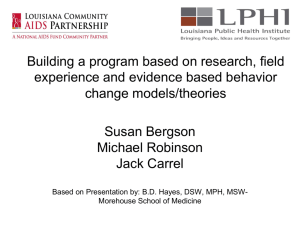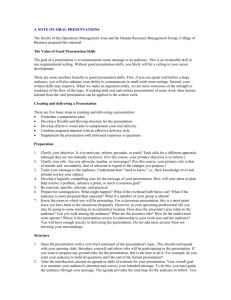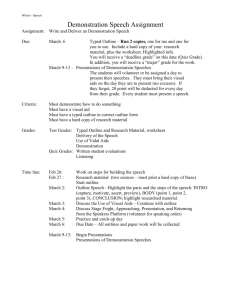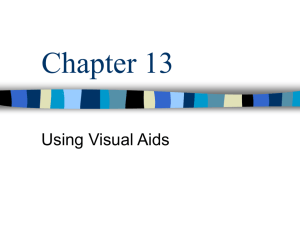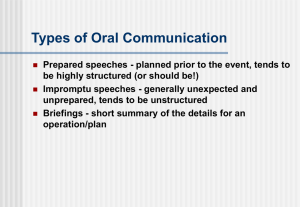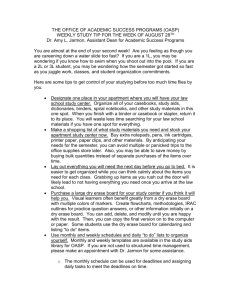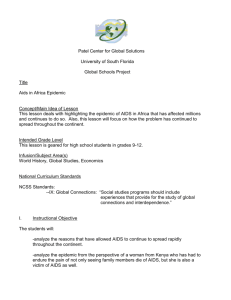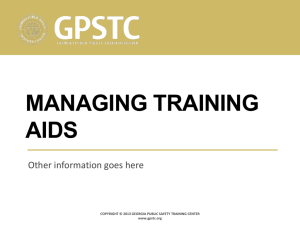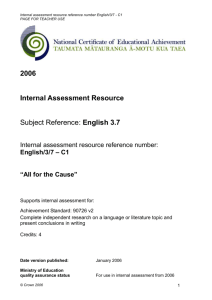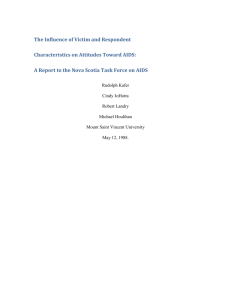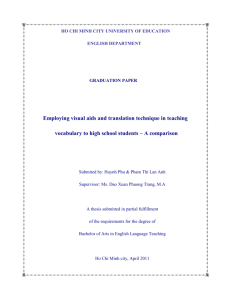Persuasive Speech Tips and Tricks-by Naomi Rockler
advertisement
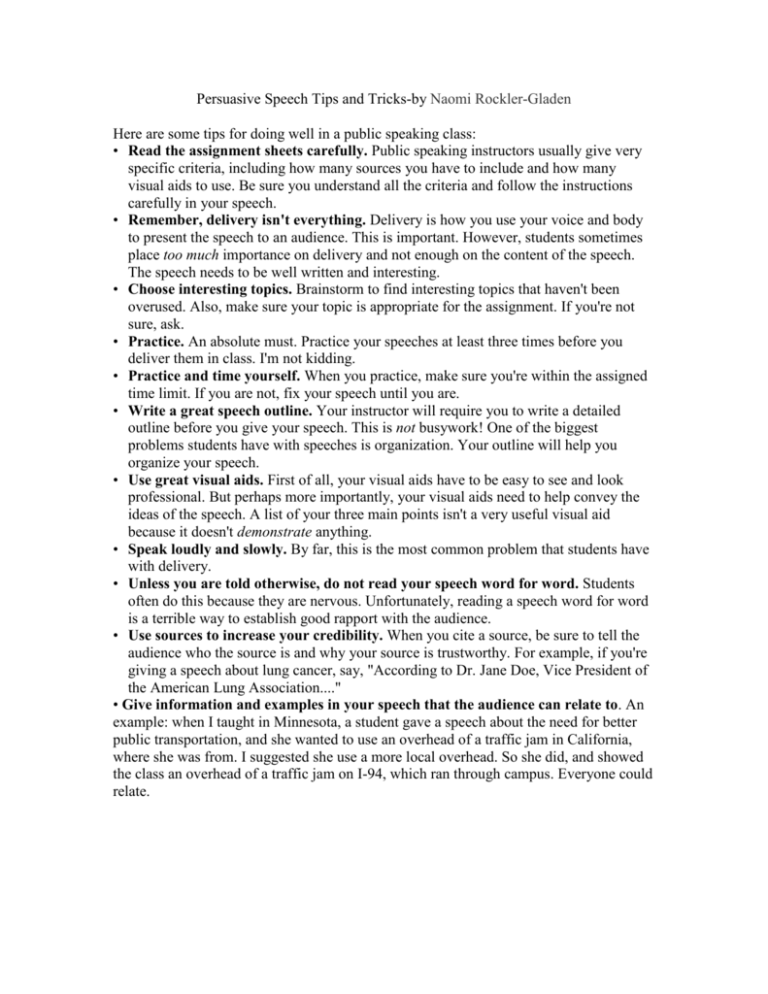
Persuasive Speech Tips and Tricks-by Naomi Rockler-Gladen Here are some tips for doing well in a public speaking class: • Read the assignment sheets carefully. Public speaking instructors usually give very specific criteria, including how many sources you have to include and how many visual aids to use. Be sure you understand all the criteria and follow the instructions carefully in your speech. • Remember, delivery isn't everything. Delivery is how you use your voice and body to present the speech to an audience. This is important. However, students sometimes place too much importance on delivery and not enough on the content of the speech. The speech needs to be well written and interesting. • Choose interesting topics. Brainstorm to find interesting topics that haven't been overused. Also, make sure your topic is appropriate for the assignment. If you're not sure, ask. • Practice. An absolute must. Practice your speeches at least three times before you deliver them in class. I'm not kidding. • Practice and time yourself. When you practice, make sure you're within the assigned time limit. If you are not, fix your speech until you are. • Write a great speech outline. Your instructor will require you to write a detailed outline before you give your speech. This is not busywork! One of the biggest problems students have with speeches is organization. Your outline will help you organize your speech. • Use great visual aids. First of all, your visual aids have to be easy to see and look professional. But perhaps more importantly, your visual aids need to help convey the ideas of the speech. A list of your three main points isn't a very useful visual aid because it doesn't demonstrate anything. • Speak loudly and slowly. By far, this is the most common problem that students have with delivery. • Unless you are told otherwise, do not read your speech word for word. Students often do this because they are nervous. Unfortunately, reading a speech word for word is a terrible way to establish good rapport with the audience. • Use sources to increase your credibility. When you cite a source, be sure to tell the audience who the source is and why your source is trustworthy. For example, if you're giving a speech about lung cancer, say, "According to Dr. Jane Doe, Vice President of the American Lung Association...." • Give information and examples in your speech that the audience can relate to. An example: when I taught in Minnesota, a student gave a speech about the need for better public transportation, and she wanted to use an overhead of a traffic jam in California, where she was from. I suggested she use a more local overhead. So she did, and showed the class an overhead of a traffic jam on I-94, which ran through campus. Everyone could relate.


